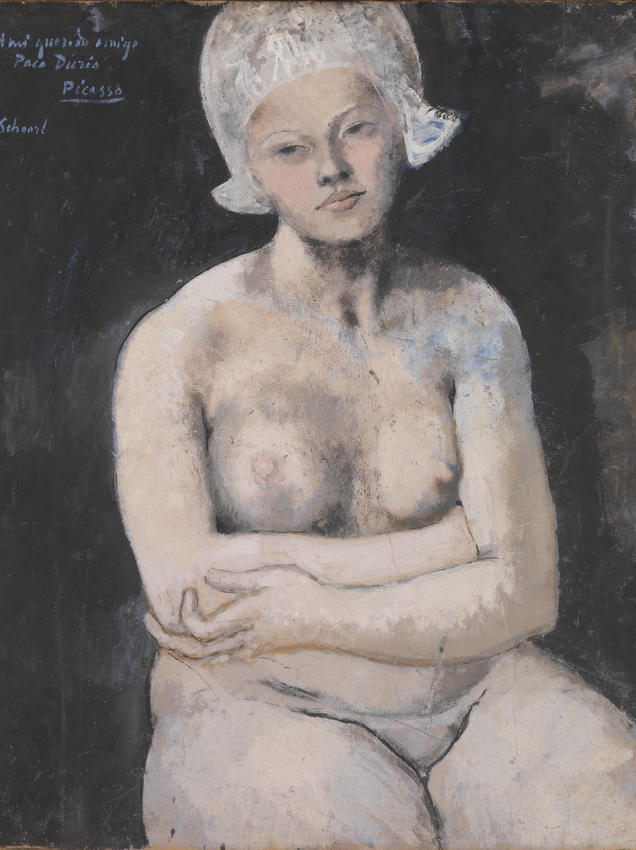We acknowledge the Traditional Owners of the land on which the Queensland Art Gallery | Gallery of Modern Art stands and recognise the creative contribution First Australians make to the art and culture of this country.

Pablo Picasso / Spain 1881–1973 / La Belle Hollandaise 1905 / Gouache, oil and chalk on cardboard laid down on wood / 77.1 x 65.8cm / Purchased 1959 with funds donated by Major Harold de Vahl Rubin / Collection: Queensland Art Gallery | Gallery of Modern Art / © Pablo Picasso 1905/Succession Picasso. Licensed by Copyright Agency, 2015
Pablo PicassoLa Belle Hollandaise 1905
On Display: QAG, Gallery 7
This artwork was painted very early in Pablo Picasso’s career during the summer of 1905 when the artist was holidaying in the city of Alkmaar, and the nearby villages of Schoorl and Schoorldam, in the Netherlands.
Little is known of the model. According to correspondence from the period, she was possibly the daughter of the owner of a small boarding house where Picasso spent most of his time in the Netherlands.
Many young Dutch women in the north of the country worked on dairy farms and continued to wear the traditional costumes and dress of the region, including the white bonnet worn by the model in Picasso’s painting. Their healthy complexions captured Picasso’s attention during his holiday, and in La Belle Hollandaise, the young woman’s skin is tinged with creamy pink tones.
Pablo Picasso is widely recognised as one of the most innovative artists of the twentieth century. Over a period of more than 70 years, Picasso worked in a variety of mediums, styles, subjects and themes.
He was born in 1881 in Málaga, Spain, and was the son of an art teacher. His family moved to Barcelona, where he entered the School of Fine Arts in 1895, followed by the Madrid Academy in 1897. Picasso first visited Paris in the autumn of 1900. He eventually settled in the bohemian quarter of Paris known as Montmartre in 1904.
Throughout his career, Picasso produced paintings, prints, sculpture and ceramics; he also designed theatre costumes and stage scenery. In the early 1900s, with fellow artist Georges Braque (France, 1882–1963), he developed the radical new style of painting known as Cubism, as well as some of the first collages and assemblages of found objects.
The Museum of Modern Art, New York, honoured him in 1939 with the major retrospective ‘Picasso: Forty Years of His Art’, which confirmed his international reputation. From 1946, Picasso lived mainly in the south of France, where he maintained his prolific artistic output. He died at Mougins, near Cannes, in 1973.
Discussion Questions
1. Study the face of the woman in Picasso’s La Belle Hollandaise. What words would you use to describe her?
2. Picasso has depicted his subject as demure. How does this depiction relate to the title of the work? Comment on the inclusion of the traditional Dutch bonnet.
Classroom Activities
1. This painting reveals Picasso’s style of painting during his Rose period. Study images from Picasso’s Blue period and compare and contrast these to the Rose period.
2. Research the headdress of various cultures and historical periods. Select different examples to create a series of portraits (photographs or drawings) to show how particular headdresses can define or change a subject’s identity.